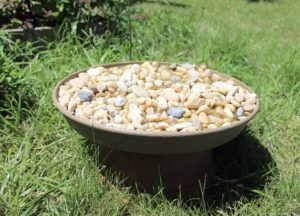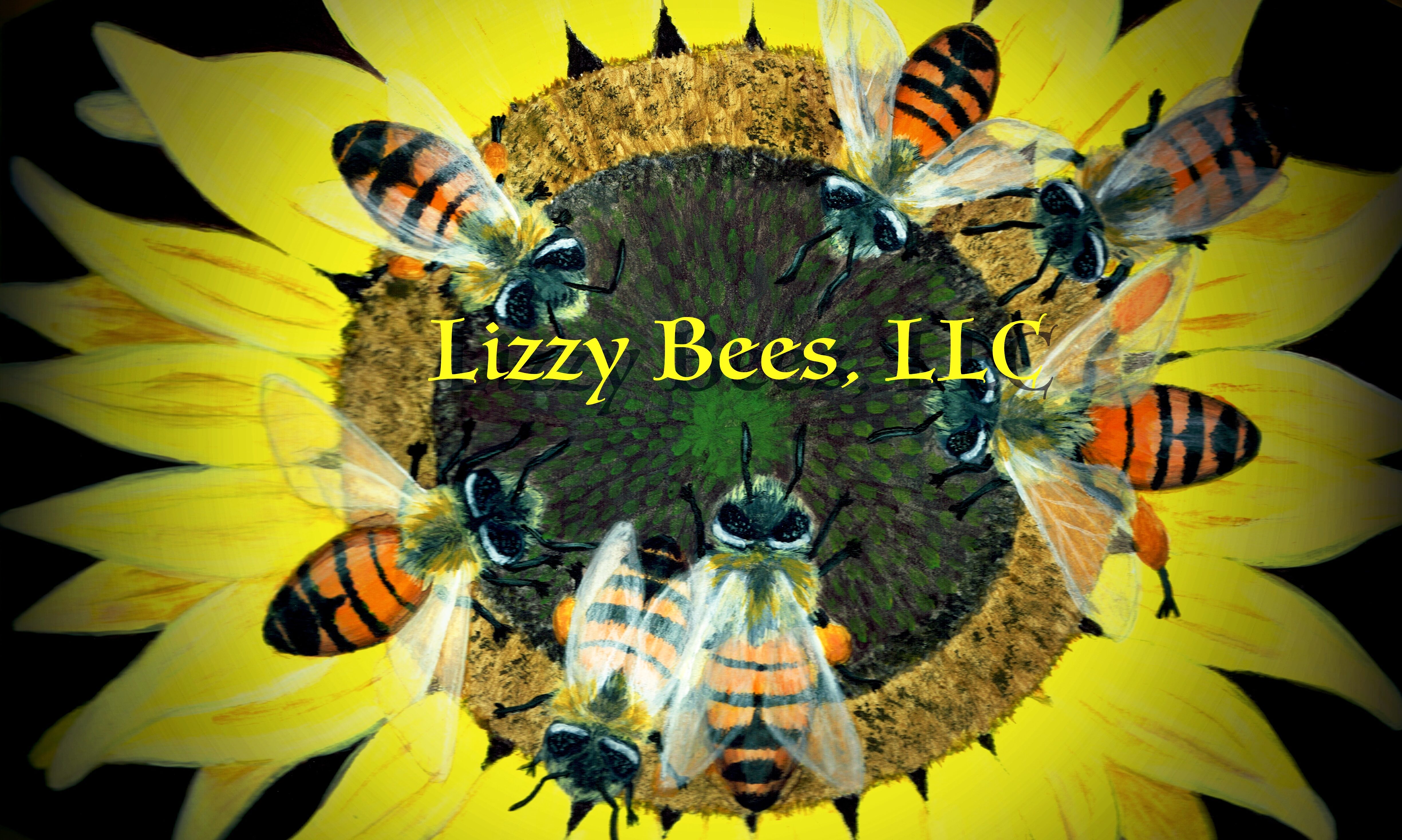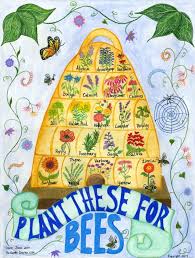All Things Pollinators
Honeycomb cell info
It takes about 2.6 lbs. of wax to construct about 100,000 cells. Bees generally need to consume between 6-8 pounds of honey or sugar water to make one pound of wax. The honey comb has hexagon (six sided) cells on both sides of a vertical central wall. It actually consists of two layers of cells placed back to back. Such a cell is a prism whose section is approximately a regular hexagon, while the ends are three-faced ‘steeples’. The walls of each honey cell are fashioned from the wax and are manufactured to a high tolerance (within 0.2% of their 1/1000 thickness) and support 25 times their weight. These cells are inclined upward 13° from horizontal to retain liquid nectar and honey. All the cell walls stand at 120º to each other, forming a perfect lattice. Natural comb cells for non-Africanized bees are generally 1 inch deep and 4.9 mm wide.
Crisis Averted….hopefully
Crisis in the apiary this afternoon. After noticing a cluster of bees on the front of one of my hives over the past couple of days, I became concerned that they were going to swarm. A quick inspection later revealed a few swarm queen cells – including a closed one, which is usually a sign that it’s too late to stop a swarm. However, the queen was still present in the hive. I am thankful that the weather went back to a more natural temperature, because if it had been sunny and in the upper 80’s/90’s for longer than those 3 days, they would have swarmed and I would have lost them. So, I had to take emergency action. I took the queen out and 4 frames of brood and honey stores, and created a new hive to create an “artificial swarm”. Hopefully, it’ll confuse the original hive enough into thinking that they have actually swarmed and they will stay put, hatch their new queen and live happily ever after. Whew…..I’d like to thank Bret Fisher of Chestnut Glen Bees of Haymarket for talking me off the ledge!
The Queen Must Die
Need a good read? There is a great book, written in 1988, that tells you all you need to know about the inner workings of a hive. Written by William Longgood, “The Queen Must Die: And other affairs of bees and men” is written by a beekeeper and not overly scientific or boring. The book explains the hierarchy and how bees handle their day to day lives.
Round-up or no?
Round-up or not? While there are both sides to the debate on whether Round-up is a source of the decline in bee populations, in general, use natural or organic pesticides whenever possible. Personally, I avoid it. Here are a couple articles both for and against for you to read or not.
Bird baths are not just for birds
Bird baths aren’t just for birds. Pollinators need water as well. If you have a bird bath, simply add a few rocks to keep the bees from drowning. Too many go into the bath to drink, but quickly drown because they have nothing to hold on to. If you don’t have a bird bath, for less than $20 you can make a great hydration stop for bees and other pollinators. I purchased a large planter tray for $9.99 and then got a bag of river rocks for $4.99. Simply fill the planter with the rocks and then water and place in your garden or flower beds. I placed mine on an old pot of mine, but you can certainly get a cinder block or some bricks for super cheap to prop it off the ground.

Queen
Because of mother’s day, lets talk about the Queen honeybee. The largest of the 3 castes, the queen is the dictator of the hive. She has an entourage of female honeybees that feed her and distribute her pheromones thought the colony, telling the others that all is well. She is larger than the other bees and while she does have a stinger, she only uses it when dueling with her successor. Once a queen is born, she is considered a virgin until her mating flight. While in flight, a drone (or several) mate with her and she returns to the hive. Her mating flight only happens once in her 3-4 year lifespan. Queens lay up to 2000 eggs per day. While all larvae are fed royal jelly through the first 3 days, the queen is fed royal jelly for her entire life. Even though she is the queen, if she slows down in egg laying or gets injured, the hive will create a new one to take her place.

